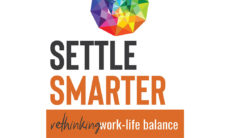No matter what line of business you are in, protecting your brand is vital. The last thing you need is somebody profiting off of your good name and reputation. There are many malefactors online who parasite and profit off of other people’s work, whether it’s stealing a piece of software that you developed, copying your logo, or just duplicating some of your work.
In order to stand out in a competitive environment, you need a strong, unique-looking website. When you achieve this, you want to make sure that no one copies your work. Below are 4 options for protecting your website.
1. Patents
Patents protect certain processes or products that express an idea. They are used for both completely new products and services as well as unique modifications to existing designs and methods.
While a website as a whole cannot be patented, its individual “parts” can be protected seperately. These include the design elements that make up the look and the feel of the entire site, the code that runs it, original photos and images, artwork and content, articles and videos.
While you do get exclusive rights to your service, product, or modification, and you disallow other form copying, using, or selling your ideas, you need to contend with your relevant Patent Office. The entire process can be very arduous because you need to prove that what you have to offer is novel and original.
In order to place a patent, you need to contact the relevant office, file a multiple forms, provide proper evidence, and deal with a great deal of paperwork.
Understand that patents are rather complicated, they take ages to get processed, tend to cost a pretty penny, and require a ton of paperwork. However, there are other, simpler options that can help you protect your IP. These are all different in various ways, but you can count on all of them to protect your intellectual property, serving as, among other things, use evidence and factors in misleading conduct disputes. These types of protections can be divided into copyrights, trademarks and trade secrets.
2. Copyrights
Copyrights can protect the entire content that can be found on your website, including the source code that holds everything in place. Lucky for you, the creator of said content automatically own the copyright rights. However, through certain copyright offices and registrations, you can gain some extra protection. As a baseline, c
3. Trade Secrets
Trade secrets are valuable information that is kept away, safe and sound, form the competition. The best examples here are recipes by huge companies, Coca Cola being the best example. These are usually backed up and held upright through non-disclosure agreements, IP assignments, confidentiality agreements, and m
4. Trademarks
Trademarks are there to protect your brand, logo, image, or company name. They are here to stop fraudulent plagiarism to take over, something that has become a much more serious issue due to the rise of the internet. When you register a trademark on your website, name, or slogan, you get a solid legal foundation on which you can build a case in plagiarism situations. Trademarks also help you help visitors avoid confusion
Other factors that can affect security
Below are a few instances that can impact website security:
Contractors and employees
Copyright ownership is different, depending on what kind of agreement you set up and who actually made your website. If one of your employees created this website for your company, then you can rest easy knowing it’s completely your property (unless you signed an agreement stating otherwise). However, contractors are a different thing entirely.
Namely, if you don’t draft an agreement that explicitly states that you are the owner of the new website, copyright completely falls in the hands of the contractor.
Misunderstandings and Infringement
It is entirely possible that two people can create the same logo at the same time. After all, the Internet is almost limitless. Copyright infringement can only be valid here if you show, to a court of law, definite proof that somebody actually stole your ideas. As far as copying is concerned, it’s rather easy to tell if the content is identical. However, if it seems that somebody just partially copied some of your work, things get a bit complicated.
In cases where it’s difficult to tell whether there is any malicious intent, a court will declare an infringement happened if quality has been copied, and not quantity. In other words, if somebody copied the things that are actually relevant, things that make up the core pieces of copyright.
In our race towards achieving success with digital marketing, we can easily end up with unscrupulous subcontractors who simply copy entire articles, or steal other people’s videos. In those cases, you need to vet them before hiring, check their work, and prove that the fault lies with the subcontractor if you end up in court.
Conclusion
Protecting your website is not simple, but it’s worth the work involved. Get the right trademark and copyright registrations placed, try not to infringe upon other people’s work, and keep an eye on your subcontractors. If you want to get a patent, know that you can only place it on certain aspects of your website and that you will need to invest a solid amount of work if you want to make the most out of it.









